+++ ALFA ROMEO has one last teaser for its enigmatic supercar ahead of the model’s debut on 30 August, at the brand’s museum. The accompanying Facebook post includes the tagline “Il coraggio di sognare”, which means “the courage to dream” in English. The 4 red lights in the teaser image might indicate a photo of the vehicle’s tail lamps. They incorporate a triangular grille with vertical slats. The upper portion of the car is red, and the lower part is very dark grey. Alfa Romeo has done an excellent job of keeping its supercar under wraps. The rumours suggest that the model might share underpinnings with the Maserati MC20. The powertrain allegedly consists of the twin-turbo 3.0-litre Nettuno V6 with an electric motor. This would result in a total output of around 800 hp versus 630 bp from the MC20, which is not a hybrid. An earlier teaser possibly offers a glimpse into the cabin. The image seems to show the steering wheel with a brown centre section and a metal badge with the brand’s cross-and-snake emblem. Alfa Romeo CEO Jean-Philippe Imparato said the supercar looked “iconic, super-sexy, and recognizable” and described it as “something that I could put aside the 8C in the museum of Arese”. The supercar allegedly goes by the name 33 or 6C. Both names are references to classic Alfa Romeo models. The Tipo 33 was a series of race cars. The 33 Stradale was a supercar by the standards of the late 1960s with a curvy body and a 2.0-litre V8 engine. The 6C comprised a whole series of racing models and road cars. An inline-6 engine was a common element for all of them. When the new supercar arrives, it might be too late for the public to get one. Alfa Romeo allegedly began accepting deposits for the model even before its corporate parent, Stellantis, gave the model a green light for production. Nearly all of them reportedly already have reservations. +++
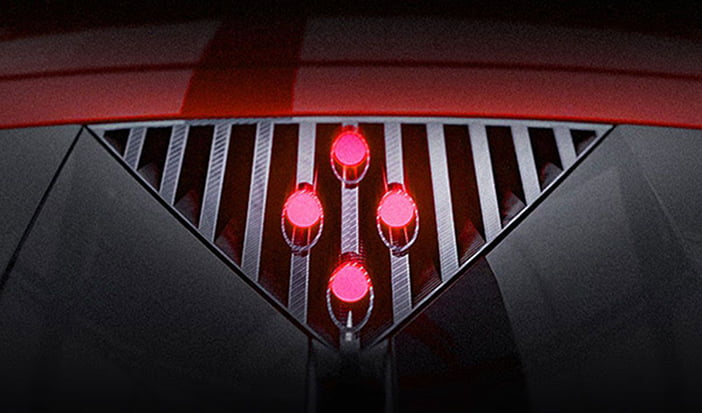
+++ BYD on Monday said first-half profit jumped 204.7% as the new energy vehicle maker broke its delivery record and retained its crown as China’s biggest-selling auto brand. Net earnings for the 6-months ending June 30 reached 10.95 billion yuan ($1.50 billion), up 204.7% from 3.6 billion yuan a year earlier, on a 72.7% rise in revenue to 260.12 billion yuan, BYD said in a stock market filing. The company posted a 6.82 billion yuan net profit for the April-June quarter, up 144.7%. That was a smaller increase than in the first quarter when profit jumped 5-fold. The Q2 earnings, the second highest quarterly number, was within BYD’s net profit forecast of between 6.37 billion yuan and 7.57 billion yuan. The Shenzhen-based automaker has managed to cement its leadership in the world’s largest auto market in the face of intensifying price competition and slowing demand. It outsold Volkswagen-branded cars in China for the first time in October. A BYD unit was revealed on Monday to have struck a deal to buy U.S.-based Jabil’s mobility business in China for $2.2 billion. Buoyed by its Dynasty and Ocean series of plug-in petrol-electric hybrids cars and battery-only electric vehicles (EV), BYD set a monthly sales record in July after deliveries hit 700.244 vehicles in the second quarter. Still, profitability is under pressure from a price war initiated by rival Tesla at the start of the year and which has drawn in over 40 brands. Since February, BYD has launched new versions for 8 of its best-selling models with prices 4%-25% lower compared with older versions. BYD has also joined a wave of Chinese EV makers looking abroad, with showrooms in countries such as Singapore and Australia. Of the 612.425 battery-only EVs sold by BYD in the first half, 10% were exports, according to data from the China Association of Automobile Manufacturers. Tesla sold 889.015 EVs globally in the same period. BYD’s second-quarter gross profit margin was 18.73%, compared with 17.86% in the first 3 months. Tesla recorded a decline in quarterly automotive gross margin in the second quarter, prioritizing sales over earnings. The U.S. automaker slashed prices in China for the second time in 3 days in mid-August, fueling a fresh round of discounts among peers vying to survive a cooling market. China’s passenger vehicle sales shrank for the second consecutive month in July, as consumers wary of buying amid a frail economy and piecemeal government stimulus. +++
+++ LOTUS ’s long-awaited electric super-saloon has officially been named the Emeya ahead of a full reveal on 7 September. Previously known by its codename, Type 133, and at one point erroneously associated with the Envya nameplate, the Porsche Taycan rival has been previewed in a new video that confirms it will feature a wraparound led rear light bar, a movable rear wing and a distinctive led headlight signature that matches the Eletre. Lotus refers to the new Chinese-built model as a hyper-GT, much as it dubbed the Eletre the world’s first hyper-SUV; a nod to the fact that it will tout power and performance figures more in line with some of the world’s fastest supercars than any similarly positioned saloons with combustion engines. It will be the brand’s first performance saloon since the early-1990s Vauxhall-based Carlton and is set to be particularly popular in China and the US; crucial markets for Lotus. Bosses have previously told that the 5-metre-long Emeya will be the most luxurious car Lotus has yet produced. Confirmation of the new model’s name comes soon after prototypes were spotted on the road in a promotional camouflage livery. Late prototypes started running down the Lotus Technology production line in Wuhan, China, earlier this year. The Emeya will be similar in size to the Polestar 5 grand tourer due on sale next year, but Lotus managing director Matt Windle has previously said that while there is some technology transfer, Geely allows its brands, which include Polestar, to conduct development independently. This means the models will be tangibly different in every key aspect. It will feature sleek styling, a sloping roof and design cues from the Evija and Eletre. Lotus has placed a major focus on its dynamic development, given the model will be tasked with taking on the Taycan and Audi E-tron GT. It will feature similar chassis technology to the Eletre (including air suspension, rear-wheel steer, active roll control and active aerodynamics) but engineered to a different brief. No technical details have been revealed yet, but it is expected to closely follow the Eletre. This means entry-level versions are likely to offer around 610 hp from a twin-motor set-up, closely matching the Taycan GTS. The top-spec Eletre R features a more powerful rear motor that lifts output to 915 hp. The Emeya will retain the Eletre’s 112 kWh battery pack, which could give the sleek saloon a range of more than 640 km. The EPA platform allows for fast charging at speeds of up to 420 kW. Asked how it will stack up to performance EV rivals such as the Taycan, Lotus commercial chief Mike Johnstone told: “When you look at performance, we’ll be in a good place, both in terms of handling and 0-100 kph speeds. In terms of charging, it will have the same platform as the Eletre so it can go from 10% to 80% in less than 20 minutes. We’ve got a number of key things we’ve taken from the Eletre you’ll see in the Emeya, which will give us a lot of differentiation”. Johnstone said the firm currently has no plans for derivative versions of its upcoming line-up, such as an Emeya shooting brake, but added: “Consumer tastes change, new market segments appear and new technologies come into play that mean we could do things in a different way – and we’re always looking for new opportunities to make sure we can maximise the amount of return on any investment we make”. Lotus has so far only confirmed its product roadmap until 2026, when its new electric sports car will arrive. Although planning is already under way, Johnstone hinted that the line-up could be adapted based on market changes. “The product plan at the moment is the 3 cars we have now (Evija, Emira and Eletre) and the 3 coming in the future”, he said. “We have to be dynamic with that plan. We’re constantly looking at how we can ensure we maximise the potential in the marketplace”. +++
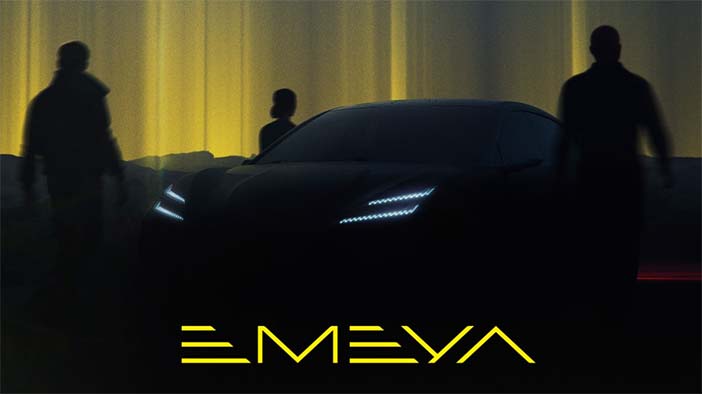
+++ The new MINI Cooper EV and Countryman EV will debut at an event on 1 September. The automaker has one last teaser for them before the big reveal. Mini’s previous teasers give us a good idea of what to expect from these models. The Cooper EV rides on the Spotlight electric-vehicle-focused platform that has a longer wheelbase and wider track than the existing model. However, the roughly 3.8-metre, length doesn’t change much. The base Cooper E trim uses a 40 kWh battery providing around 385 km of range. A single electric motor would make 184 hp. The Cooper SE is the more potent grade. It has a 54 kWh pack and a 218 hp electric motor. In the Netherlands, prices would start at around €38.000. Sales begin in that market in the summer of 2024. Recent spy shots show Mini developing what we believe is the John Cooper Works variant. No details are available yet about the specs. Judging by previous versions of this model, the JCW would have a power boost over other trim levels. Mini already revealed the Cooper EV’s interior. The company simplifies the layout by making the circular screen on the dashboard perform infotainment and instrument functions. A head-up display is ahead of the driver. An oval-shaped piece on the centre stack includes some physical buttons. The Countryman will share a platform with the BMW iX1. There will be the base E trim with a single motor making 192 hp and a 54 kWh battery. There will also be the SE ALL4 trim with 2 electric motors (1 at the front and 1 at the back) with a total of 313 hp and a 64 kWh pack. It will also get a John Cooper Works variant eventually. The electric Minis will be part of BMW Group’s electrification presentation at the IAA Mobility show in Munich, Germany, starting in September. The other debuts will be the i Vision Circular and i Vision Dee concepts. The i7 will be there in an armored variant. The iX5 Hydrogen will show off the automaker’s fuel cell tech. The plug-in-hybrid 530e and 550e xDrive will be at the event, too. +++
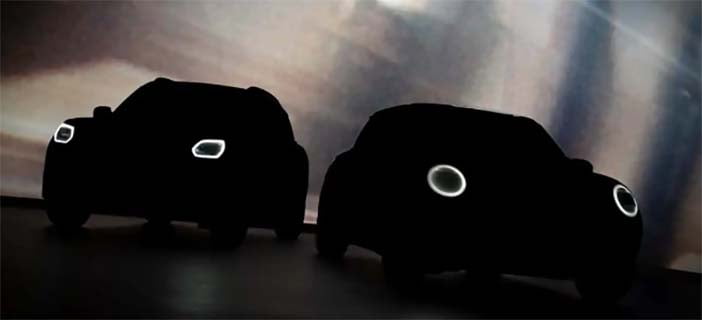
+++ PORSCHE has previewed a radical change of direction for its dedicated sports cars in the electric era, with the recently revealed Mission X and Vision 357 concepts giving clues as to what to expect. Head of advanced exterior design Ingo Scheinhütte said the styling of upcoming Porsche sports cars “must be an evolution” that respects the German firm’s heritage, as evidenced by the radically different concepts, which will also have an influence on upcoming saloons and SUVs. Autointernationaal.nl recently spoke to Scheinhütte to discover how Porsche’s latest concepts could shape its future electric production cars. Question: Which elements of the Mission X electric hypercar and 356-inspired Vision 357 concepts will we see on production cars? Answer: “You bring all the ideas to a concept, but you have to see how they develop. Some elements are essential for our brand ID, like the continuous light arch, and on the Mission X, you see a development of that. Instead of just having a light bar, it now has the Porsche logo integrated into it. I’m confident this is something we will see in production. The 2 concepts are very different in the way they are designed. The 357 is a love letter to the original Porsche shape, while the Mission X is a development of the Porsche design language”. Q: Can this design approach work in other segments? A: “The more you go into the limousine segment and SUV segment, the less 3D shapes you can play with, so sportscars are kind of our blueprint that we try to take and adapt to our SUVs. Some things work, some things don’t. On the 357, there is a crease on the side, and usually Porsches are very round. This time, we tried to give it a bit of an edge and a corner, even bring the corner around the whole car. I think we could apply that to our SUVs”. Q: How can you bring new ideas while respecting brand heritage? A: “We have to push both tradition and innovation at the same time. We’ve been building cars for 75 years and have been called the laziest designers in the car industry. We always try to be as innovative as possible, but we don’t want to revolutionise our design. It has to be an evolution, and we’ve been using this recipe for 75 years”. Q: What are the challenges of producing electric versions of your current models, such as the 911? A: “It’s not about the package. The biggest challenge with the 911 is its very strong heritage. It’s the one car we’re most careful about, and we need to be when moving into the next generation. When we designed the current 911, we made half a dozen skateboards which showed very different directions, just because the heritage is so strong and heavily influenced by the original car”. Q: What were the biggest takeaways from the Vision 357 project? A: “We asked ourselves ‘what is the main thing that makes a shape?’ and interestingly it was the headlights. 10 years ago, I would have said that the most important exterior element on a Porsche was the headlights. But if you look at what we have done on the 357, Mission X and even the 963 LMDh endurance racer, we’re slowly figuring out that the headlights are not the most important thing. We can play around a bit and that’s an area in which we used to be very careful”. Q: How will you make halo EVs feel as special as the old ICE Carrera GT and 918 Spyder? Q: “When doing halo cars, there’s always a good reason for doing it. There’s always an intrinsic reason behind them because we have to build a car that’s relevant to the market and relevant to the brand as well. For exterior designers, it’s the shape that makes a car special, but its shape is very much dependent on the technology that we want to bring and the message we want to send. The Mission X is a good example, because now we’re confident that we can make an impact with electric cars”. Asked if the long-bonnet, cab-back format used for the old 944 and 928 could work for an EV, Porsche exterior design boss Ingo Scheinhütte suggested this isn’t an avenue the firm is actively pursuing. He said: “The old GT design with the large bonnet is the oldest symbol we can use in car design, because people know that they’re cars. But now with EVs, you don’t have those symbols any more, and you don’t want to send a fake message. Although the symbol might still work, you have to be honest and create a package that appeals. I think it could work, but I think it would be the wrong thing to do”. +++
+++ RENAULT has named the new SUV it plans to launch for international markets. It’s called the Kardian, and it’ll debut on 25 October. That’s when the French automaker will also present its new strategy for international markets. The new B-segment SUV will go on sale first in Latin America, breaking cover in Rio de Janeiro, before becoming available elsewhere. Renault says the new Kardian will embody “the start of the brand’s new product offensive in markets outside of Europe”. Details about the new model remain elusive, but it could be Renault’s version of the Dacia Sandero Stepway. Dacia updated the Sandero in 2020 for the 2021 model year with a new generation that included the rugged Stepway variant. The Sandero Stepway is a high-riding version of the hatchback featuring roof rails, integrated skid plates in the bumpers, an increased ride height, plastic wheel arches, and additional mouldings. In announcing the Kardian’s October debut, Renault also teased the SUV. The automaker revealed the SUV’s word mark underneath the Renault badge. It also offered a brief glimpse of the taillight, hatch, and roof spoiler, but it isn’t easy to discern details about the SUV’s overall design. It certainly looks similar to the Sandero. Renault recently refreshed the Arkana, giving the SUV a thorough facelift. It adopted the brand’s new corporate logo but doesn’t appear to share any prominent styling motifs with the new B-segment model. The taillights look completely different, but the 2 models could share some front-end similarities. We don’t have any powertrain details for the French automaker’s new offering. We don’t expect any electrification as Dacia doesn’t offer the Sandero any electrified powertrains. We don’t expect the next-generation Dacia to launch until the second half of the decade when the alliance plans to ramp up production of electrified vehicles. Renault has been part of an alliance with Nissan for nearly 25 years. Mitsubishi joined in 2017. In early 2022, the trio announced a plan to launch no fewer than 35 new electric models by the decade’s end, with 90 percent of them riding on 5 common platforms. The alliance’s strategy includes plans to mass-produce solid-state batteries by the middle of 2028. +++
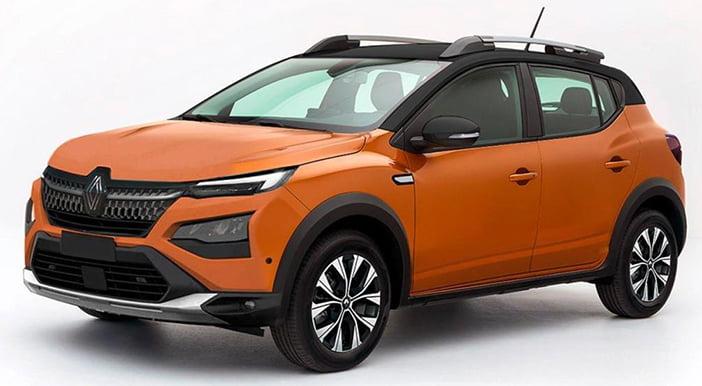
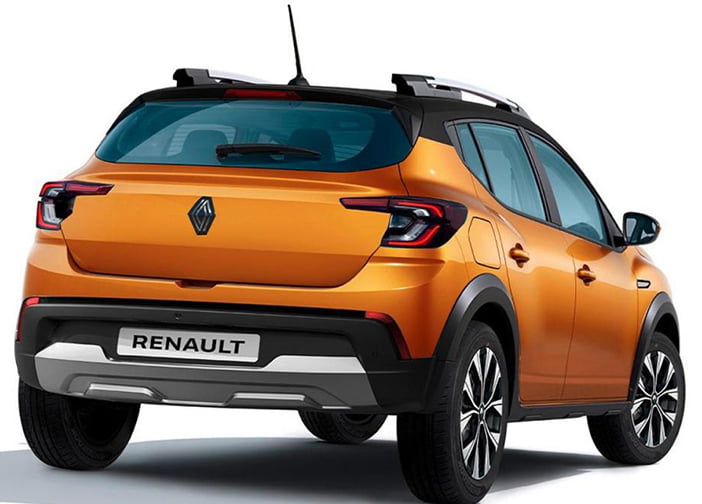
+++ TESLA said in a blog post a few years ago that its Supercharger network would “never be a profit centre”. The brand has come a long way since then, and one analyst has estimated the Supercharger network to grow into a multi-billion dollar business in the coming years. Dan Ives, the managing director and senior equity research analyst at investment firm Wedbush Securities, forecasted that Tesla’s Supercharger business could be worth roughly 3 to 6 percent of total revenues, translating to a $10 to $20 billion business by 2030. The Wall Street analyst based his forecast on multiple factors, including Tesla’s North American Charging Standard (NACS) deal with several automakers, its energy business, investment in artificial intelligence, and an increasing production capacity, among others. Ives added that Tesla is in a “prime position” to further capitalise on the journey to electrification and that global demand for Tesla EVs is holding up with the recent price cuts. His projection for the Tesla stock is $350. After reducing the price of Tesla models several times this year, CEO Elon Musk said in July 2023 that the brand could cut prices again if “turbulent times” arise. In its early days, Tesla enticed customers with free unlimited supercharging for the Model S and Model X. In 2018, the brand withdrew the perk stating its unsustainable nature. Although there are reportedly thousands of Teslas still benefiting from free supercharging. These might be older Teslas which came with the free service, or newer ones with temporary deals. The brand hasn’t entirely ended the free programme, offering inventory deals to Model 3 customers in June 2023, luring them in with three months of free unlimited supercharging, if ordered during a certain period. After Ford announced adherence to Tesla’s North American Charging Standard this summer, multiple carmakers followed suit, including General Motors, Mercedes-Benz, Honda, Volvo and Nissan among many others. The OEMS are not required to pay licensing fees to Tesla for incorporating its NACS connector. However, customers will incur a fee when utilizing the Tesla Supercharger, which could be one of the ways it might thrust into a multi-billion dollar business. +++
+++ Color me intrigued. VOLKSWAGEN has taken to Twitter X to tease a potential revival of the Rabbit. In case the moniker doesn’t ring a bell, it was used for the Golf MKI sold in the United States during the first and fifth generations. Later on, there was also a Rabbit Edition GTI based on the MK7 for the 2019MY. 2 short clips posted on the social media platform show a bunny and a garage, respectively. However, they’re not even remotely revealing. With these clips, Volkswagen has started the countdown to what we can only presume will be the debut of a new car, be it a special edition or a concept. It looks as though the premiere is locked in for 3 September, a day before the 2023 IAA Munich begins with the press day. However, I don’t know whether the vehicle will be at the show in Germany. The use of the word “Rabbit” might suggest it’s US-focused but these tweets were published on the global channel rather than by VW of America. Lest we forget the 2023 Detroit Auto Show is also happening in September, so this is all a bit confusing. For what it’s worth, one of the hashtags used by the Wolfsburg-based automaker is “#OneFuture.” That tells us it’s possibly an electric car, but bear in mind this is only an assumption we’re making at this point. Provided it’s an EV, what could it be? It’s too early for a preview of the 9th generation Golf since the Mk 8.5 hasn’t even been unveiled yet. The compact hatchback’s all-electric successor is unlikely to arrive sooner than 2028. Maybe VW is looking to revive the “Rabbit” nameplate for the ID.3 GTX? Perhaps it’s a spicy version of the ID2.all concept? Again, I’m spitballing here due to the lack of information. More teasers should be released in the coming days until the probable debut on Sunday, which by the way is a bit unconventional for VW to unveil a car during the weekend. +++


